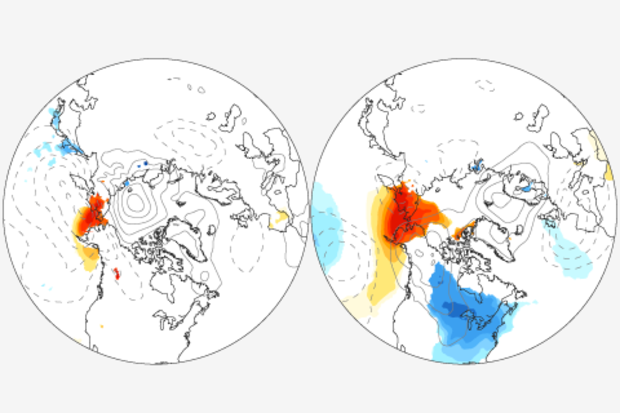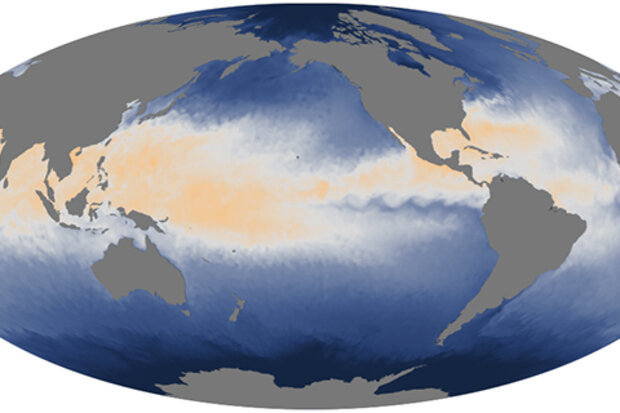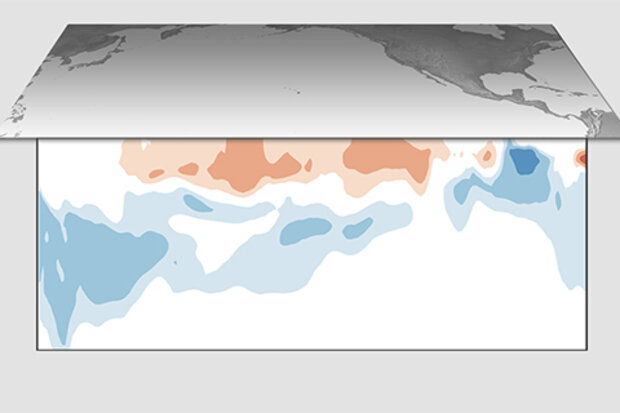ENSO Blog
In recent years, a popular debate has been occurring within the climate community. No, it’s not whether climate change is occurring and caused by humans. (It is.) Instead, it’s regarding how much of an effect, if any, the rapid warming of Earth’s frozen cake-topper we call the Arctic, and the corresponding reduction in Arctic sea ice, has been having on winter across the mid-latitudes where most of us live.
The debate arose because, while winters have in general warmed during the last century, some regions have shown a weak cooling trend for certain periods. A cooling trend, from around 1990 through 2013 in landmasses across the mid-latitudes, has been noted in previous research (Cohe…
Read article
El Niño 2019 is a thing of the past, and neutral conditions reign, as my brilliant blog brother Nat covered last month. Thanks, Nat!
So where do we go from here? Forecasters estimate a 75% probability that we’ll hang out in neutral through the fall, with a 55-60% chance of continued neutral conditions through the spring of 2020. Most of the climate models estimate that the surface temperature of the tropical Pacific Ocean will remain slightly above average, but below the El Niño threshold of 0.5°C (0.9°F) above the long-term average.
The territory between the El Niño threshold and La Niña (0.5°C below the long-term average) is designated ENSO-neutral. (ENSO = El Niño/Southern Oscillati…
Read article
The El Niño of 2019 is officially done. Near-average conditions in the tropical Pacific indicate that we have returned to ENSO-neutral conditions (neither El Niño or La Niña is present). Forecasters continue to favor ENSO-neutral (50-55% chance) through the Northern Hemisphere winter.
What’s on our plate?
The July Niño3.4 index, our primary index for monitoring ENSO, was 0.4°C above the long-term average, falling below the El Niño threshold of 0.5°C for the first time since last September. In addition, tropical atmospheric conditions have trended toward neutral, as the cloudiness and rainfall over the Pacific were near average over the past month. The trade winds also have been n…
Read article
There’s no doubt ENSO is a major heavyweight in the battle to dominate the world’s climate, which is why we obsess over conditions in the tropical Pacific Ocean. But there are other climate drivers that spend time in the ring and have their moments of glory. Here, we will cover some exciting new research that suggests that the land surface, and in particular soil moisture, can sometimes impact atmospheric flows across thousands of miles!
One of the great pleasures of working at the NOAA Climate Prediction Center is that some scientists are interested in visiting us and introducing us to the latest ideas in climate research. Dr. Haiyan Teng of the National Cente…
Read article
El Niño is hanging on by its fingernails, but forecasters predict this event will wind down within the next couple of months. It’s likely that the temperature of the tropical Pacific Ocean surface will return to near-average soon, qualifying for “ENSO-neutral” conditions. Neutral conditions are favored to remain through the fall and winter.
Not dead yet
The June Niño3.4 index, our primary ENSO measurement, was 0.6°C above the long-term average, just above the El Niño threshold of 0.5°C. There is some evidence that the atmosphere over the central Pacific is still responding to that extra heating, as a bit more clouds and rain than average were present in June.
The Southern Oscillatio…
Read article




